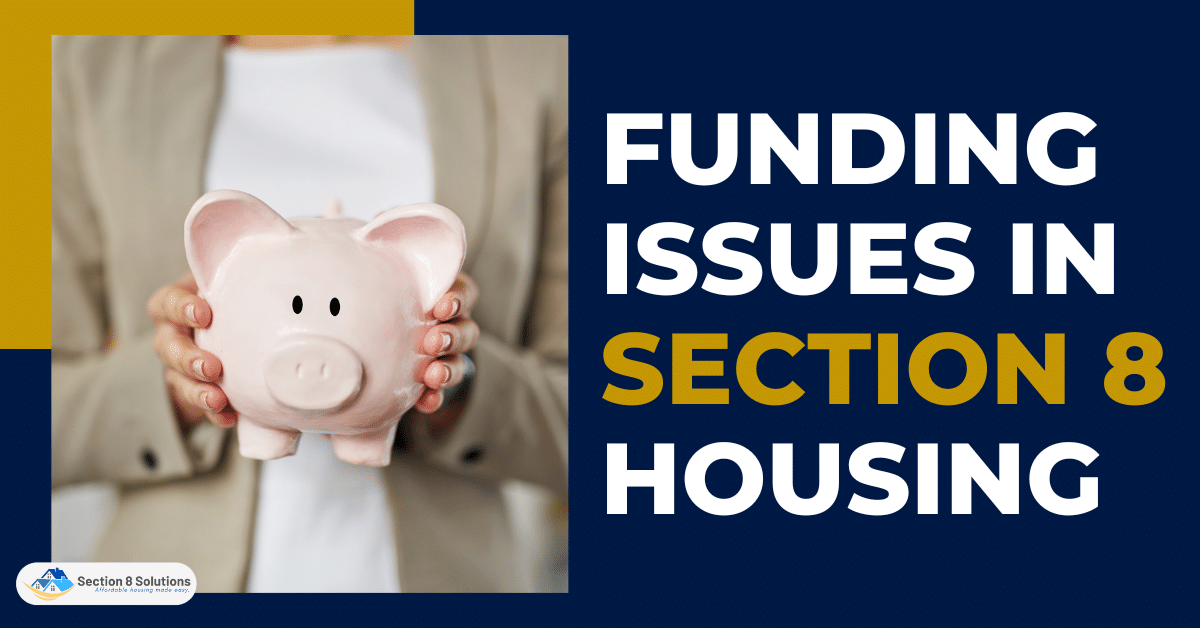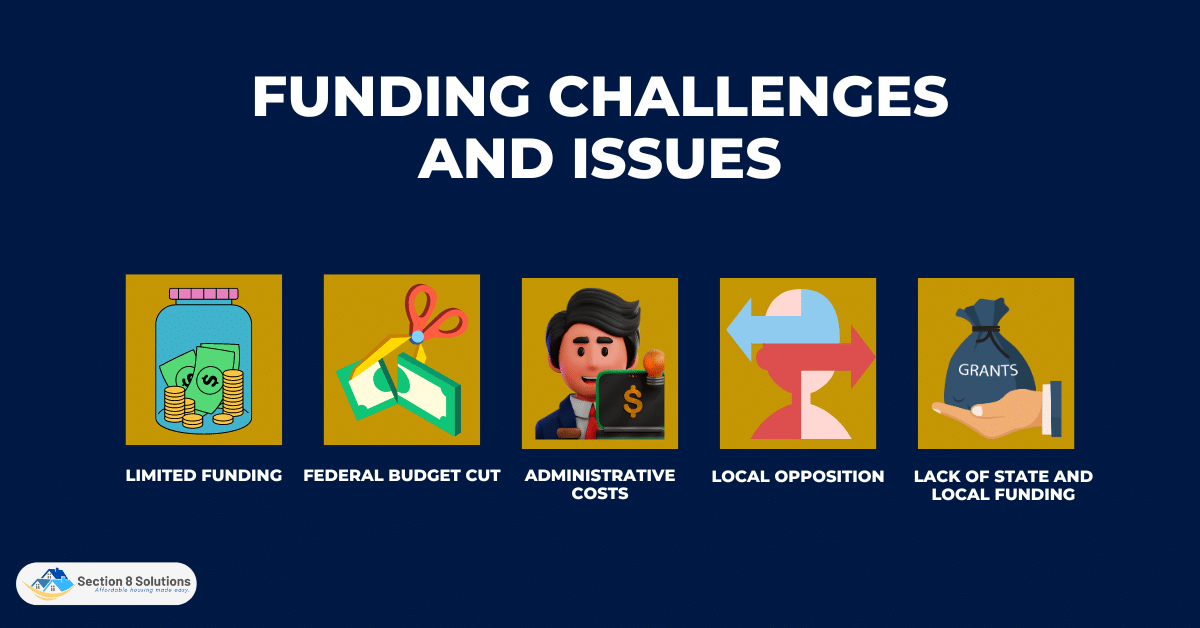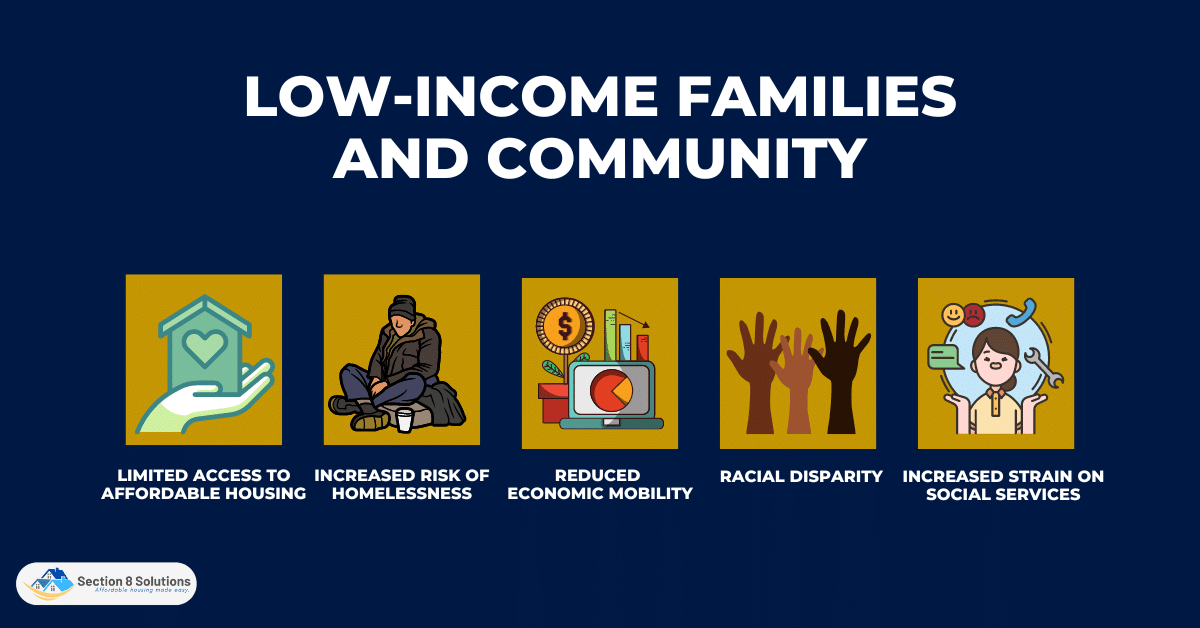Funding is integral to Section 8 housing, providing rental assistance to low-income families. Despite its importance, Section 8 programs in the US face ongoing funding issues, leading to long waitlists and insufficient support for those in need. Prioritizing financing for these programs is crucial to providing affordable housing to vulnerable populations.
This article will explore the funding issues facing Section 8 housing, the impact of these challenges on low-income families, and the potential policy solutions to address these challenges.

The Current State of Section 8 Housing
The current state of Section 8 housing in the US is marked by high demand and long waitlists for rental assistance. According to a recent report by the National Low Income Housing Coalition, there is a shortage of 7.2 million affordable and available rental homes for extremely low-income renters in the US, leaving many families struggling to find affordable housing. This has resulted in long waitlists for Section 8 housing, with some families waiting for years to receive rental assistance.
Low-income families, especially homeless or at-risk families, are severely impacted by this affordable housing crisis. Families must choose between food, healthcare, and housing without affordable housing. Many families live in overcrowded, dangerous homes or become homeless, which can harm their health.
Children who experience homelessness are more likely to experience developmental delays, poor academic outcomes, and mental health issues. The shortage of affordable housing also has a broader impact on the community, including increased healthcare costs, decreased economic productivity, and increased social service spending.

Funding Challenges and Issues
Section 8 helps low-income families rent. However, budgetary concerns have hindered affordable housing for families. This section will cover Section 8’s five financial concerns and their effects on low-income families and the community. Understanding these issues helps us discover solutions and lobby for more affordable housing funding.

1. Limited Funding
Limited funding is a major challenge facing Section 8 programs, and it has significant impacts on low-income families and the communities they live in. The funding allocated to the program has not kept pace with inflation, which has resulted in a decrease in the number of vouchers available to eligible families. This decrease in funding has created long waiting lists for rental assistance, limited the availability of affordable housing options, and put a strain on the resources of local Public Housing Authorities (PHAs).
2. Federal Budget Cuts
The federal budget cuts that have impacted Section 8 programs have been significant and far-reaching. One of the most significant was the 2013 sequestration, which resulted in automatic across-the-board cuts to federal programs, including Section 8. These cuts had a significant impact on the program, reducing the number of available vouchers and limiting the amount of rental assistance that eligible families could receive.

3. Administrative Costs
Administrative costs are a major financing issue for Section 8. PHAs review applications, inspect facilities and enforce program restrictions. Staff, resources, and funds for these duties are scarce, especially in the current financing situation.
PHAs may struggle to meet administrative expenditures due to limited funding. When funding is low, PHAs may slash personnel or program services, which can hurt families seeking rental assistance. Reduced personnel and program services might delay application processing, inspections, and supportive services like job training and counseling.
4. Local Opposition
Opposition to the use of Section 8 vouchers for affordable housing is a significant challenge facing the program, especially at the local level. In some communities, there may be misconceptions or misunderstandings about the program, which can lead to opposition from landlords, residents, and local officials. This can make it difficult for PHAs to find landlords who are willing to participate in the program, which can limit the availability of affordable housing options for families in need.

5. Lack of State and Local Funding
While some states and localities provide additional funding to supplement the Section 8 program, many do not. This can limit the availability of affordable housing options in some communities, particularly those with high housing costs.
Addressing these funding challenges and issues is critical to ensuring that low-income families have access to safe, decent, and affordable housing. Policymakers and advocates continue to push for increased funding and investment in affordable housing programs to address these challenges and support the needs of vulnerable families.

Low-Income Families and Community
Funding challenges and issues facing Section 8 programs can have a significant impact on low-income families and the broader community. In this section, we will explore some of these impacts and discuss why it is crucial to address funding challenges to ensure that the program can continue to provide rental assistance to families in need.

- Limited access to affordable housing: Funding challenges can limit the availability of affordable housing options for low-income families. This can lead to longer waitlists for rental assistance and force families to live in overcrowded or substandard housing conditions.
- Increased risk of homelessness: Without access to affordable housing options, low-income families are at increased risk of experiencing homelessness. This can have long-term consequences for families, including mental and physical health problems, as well as impacts on children’s education and development.
- Reduced economic mobility: Housing affordability is a critical factor in determining economic mobility. When low-income families cannot afford safe and stable housing, they may struggle to access employment, education, and other opportunities that can help them achieve long-term financial stability.
- Racial disparity: Communities of color are more likely to experience housing insecurity and other economic challenges. Funding challenges in Section 8 programs can exacerbate these inequalities, leading to a disproportionate impact on communities of color.
- Increased strain on social services: When families cannot access affordable housing, they may need to rely on social services such as food assistance, healthcare, and emergency shelter. This can place an increased strain on these services, which may already be limited in availability and resources.
Funding challenges facing Section 8 programs can have significant impacts on low-income families and the broader community. Addressing these challenges and ensuring adequate funding for affordable housing programs is critical to promoting economic mobility and reducing housing insecurity for families in need.
Federal Funding for Section 8 Housing
The federal government plays a critical role in funding Section 8 housing programs, providing rental assistance to low-income families across the United States. In this section, we will explore the role of the federal government in funding Section 8 housing, as well as the current funding levels and trends.
The federal government provides funding for Section 8 housing through the Department of Housing and Urban Development (HUD). HUD distributes funding to local Public Housing Authorities (PHAs), which administer the program at the local level.
The funding levels for Section 8 programs have fluctuated in recent years. In 2020, Congress allocated approximately $25.8 billion in funding for the Housing Choice Voucher program, the largest component of Section 8 housing. However, this funding level still falls short of the estimated need for rental assistance in the United States.

State and Local Funding for Section 8 Housing
State and local governments also play a critical role in funding Section 8 housing programs. While the federal government provides the majority of funding for the program, state and local governments can provide additional support to help meet the needs of low-income families in their communities.
State and local funding can be used to supplement federal funding for the program or to create new affordable housing programs that serve the unique needs of their communities. In some cases, state and local governments may also provide tax incentives or other financial support to encourage landlords to participate in the Section 8 program.
However, state and local funding for Section 8 housing programs can vary widely depending on the location and political climate. Some states and localities may prioritize funding for affordable housing and invest heavily in Section 8 programs, while others may provide little or no support.

The Future of Section 8 Housing Funding
The Section 8 program has faced significant funding challenges in recent years, leading to a decrease in the availability of rental assistance for eligible families. In response, policymakers and advocates have proposed various policy solutions to address these funding issues.
- Increased Federal Funding: One potential solution to the funding challenges facing Section 8 housing is increased federal funding. This could be achieved through increased appropriations for the program or through reforms to the tax code to incentivize private investment in affordable housing.
- State and Local Funding: State and local governments could also play a role in addressing the funding challenges facing Section 8 housing. This could include increasing funding for affordable housing initiatives or implementing policies to incentivize private investment in affordable housing.
- Rent Reform: Another potential solution to the funding challenges facing Section 8 housing is rent reform. This could involve restructuring the way rent payments are calculated to better reflect the cost of living in different areas and to incentivize landlords to participate in the program.
Increased Section 8 funds might help low-income families find safe, affordable homes. Homelessness and public health could also improve. Rent reform may encourage more landlords to engage, increasing affordable housing options.

Conclusion
Finally, Section 8 housing programs help low-income US families find affordable housing. However, limited federal funds, administrative overhead, local opposition, and more make supporting these programs difficult. These issues affect affordable housing for the needy.
While proposed policy solutions may provide some relief, there is a clear need for increased support and investment in Section 8 housing programs to ensure that all families have access to safe and affordable housing. By prioritizing funding for these programs, we can make significant strides toward addressing the affordable housing crisis in our country.












